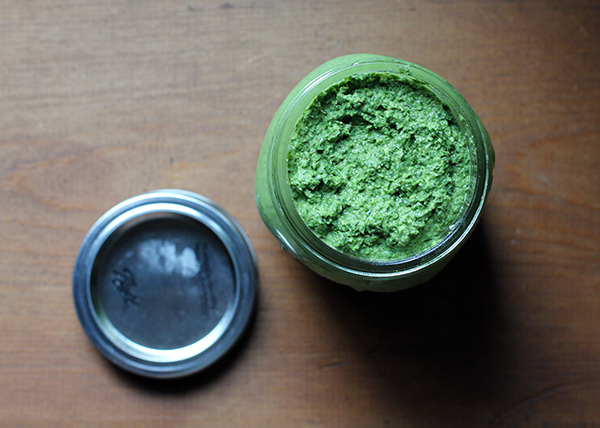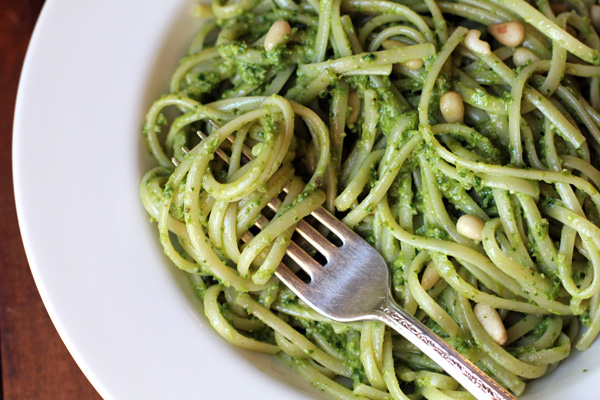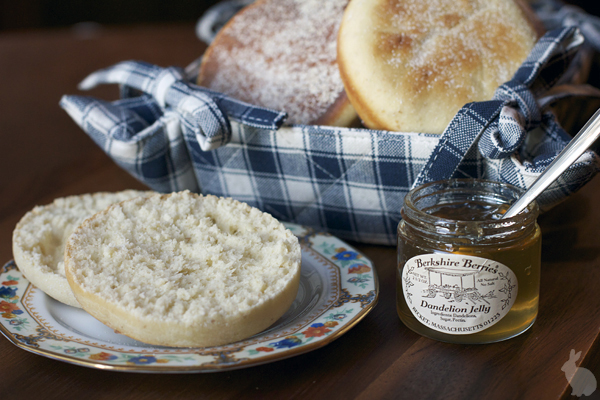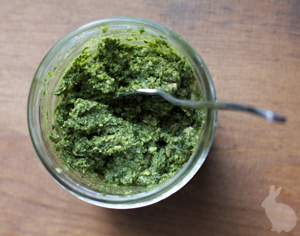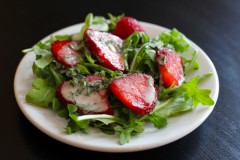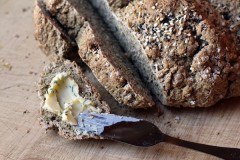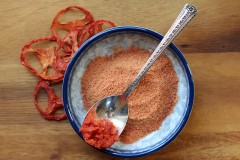The first days into an August that could variously be described as sticky, gritty, or just plan oppressive (same as it ever was? yes, but still), my kitchen projects are decidedly anti-cooking. In fact, I’m to the point that I will stop to consider whether bending over to lug the food processor out of its storage space is worth the effort, so you can see how things have ground to a kind of halt here in Wonderland.
Still, when your CSA haul means you have acquired not only two heads of lettuce for your nightly no-cook dinner salads but also a bunch of swiss chard and a bunch of kale–all of which needs to fit in the ‘fridge in some manner–steps must be taken.
Lately, this is when kale pesto becomes very attractive. Kale may be the ultimate cliche of the super natural food blogger (seriously, click and read that), but I get exhausted just looking at it. The thought of kale chips has never inspired me to kitchen action (though I will happily eat yours!), and the idea of chewing a week’s worth of kale salads at home will force me to suggest dining out. This kale pesto, however, reduces down neatly to a pint-sized jar, ready to be smeared on pizzas and sandwiches of all kinds, to be tossed with pasta, or to serve as a dip for veggies and pita chips.
Kale Pesto
1 bunch kale, stems removed (about 6 cups–however much I have, I just pack it in)
3/4 cup walnuts (or pecans, pistachios, pine nuts, or a mix of these)
2 garlic cloves
3 T nutritional yeast
1/2 tsp. salt or to taste
juice of one lemon
1/2 cup olive oil
Place garlic cloves, nuts, nutritional yeast, and salt in the large bowl of your food processor and pulse to evenly break down nuts. Stop and pack half of the kale into the processor bowl. Drizzle the lemon juice and half of the olive oil over the kale and process until there is room enough to add the rest of the kale and remaining olive oil.
Continue processing until desired texture is achieved. Stop to scrap down the sides of the bowl as needed. Taste and add additional salt or nutritional yeast if desired. Add more oil if you need a looser consistency. I like to leave mine thick so I can spread a deep layer of it on sandwiches and then thin it in portions for use on pasta, etc.
Pack the finished pesto into a jar with a tight-fitting lid, adding a bit of additional olive oil to the top surface of the spread to prevent discoloration if you anticipate significant time between uses.

